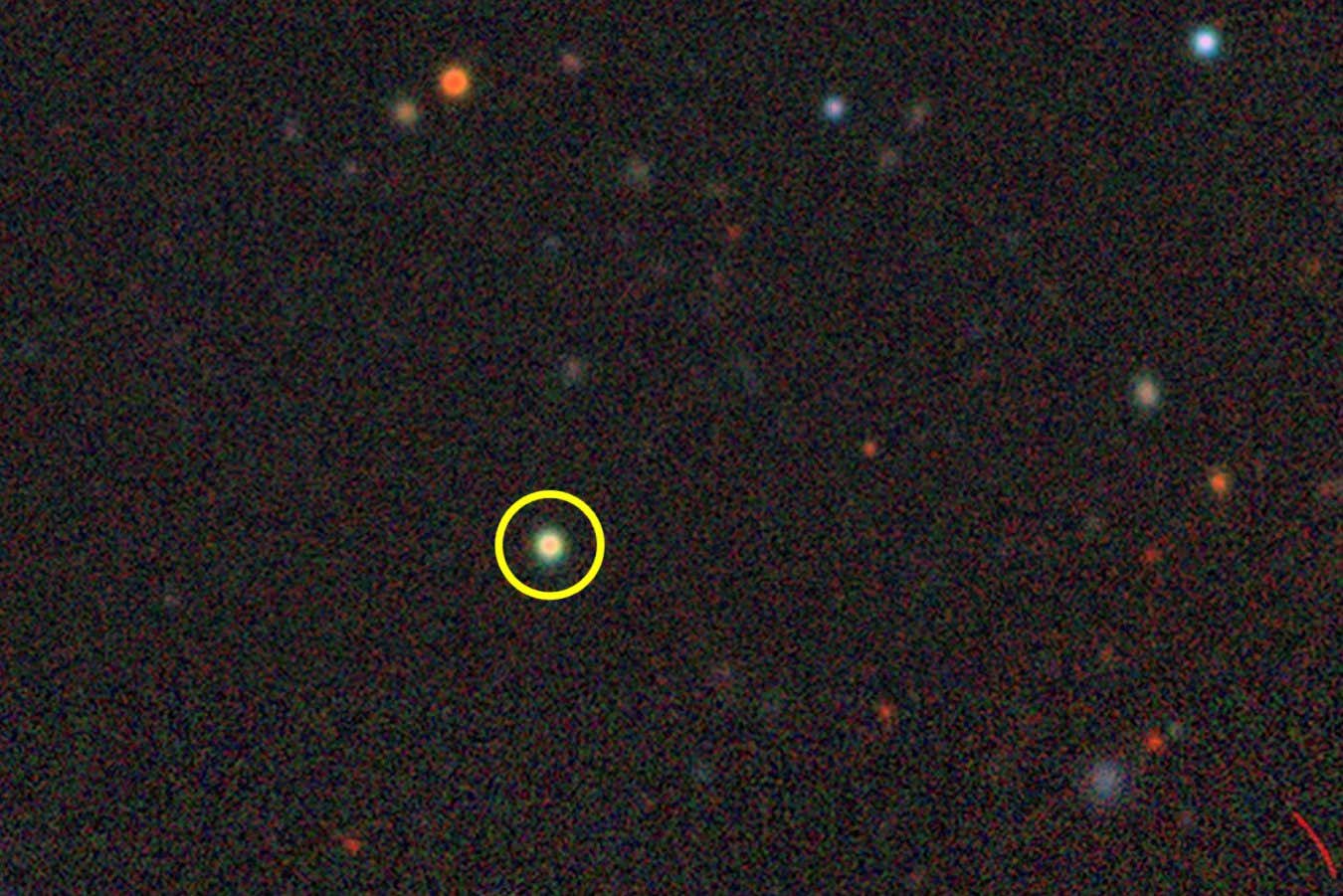Small, compact galaxies seen in the early universe have puzzled astronomers – finding these unusual objects closer to home could provide hints about how they form
By Jonathan O’Callaghan
18 July 2025
J1025+1402, one of the three little red dot galaxies seen up to 2.5 billion light years away
DESI Legacy Survey/D. Lang (Permieter Institute)
A weird type of galaxy seen in the early universe has now been spotted in a more recent part of the cosmos, raising questions about their true nature.
Over the past few years, astronomers using the James Webb Space Telescope (JWST) have seen many small, compact and red objects from the first billion years of the universe, known as little red dots (LRDs). They were thought to be linked to some process in the early universe, such as the birth of supermassive black holes found at the centre of most galaxies, including our own.
Read more
Astronomers have spotted the largest known object in the universe
Xiaojing Lin at Tsinghua University in China and her colleagues have now made an unusual discovery, finding LRDs in the much more recent universe, some 12 billion years after the big bang. “The discovery illustrates that the conditions that give rise to little red dots are not exclusive to the early universe,” says Lin.
The team looked through images taken by the Sloan Digital Sky Survey using a telescope in New Mexico. They identified three objects seen by JWST that looked like LRDs, but, crucially, they were only up to 2.5 billion light years away.
“They fit every single definition of little red dots,” says team member Xiaohui Fan at the University of Arizona. “I don’t think there’s any doubt they are very similar.”
